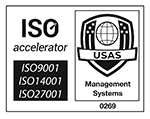Do I still need a server?

Is a question we are asked a lot.
For many years, servers were the only way an organisation could achieve a robust and resilient centralised storage of data, manage printing solutions, deliver business-grade email and run a key line of business applications.
For many years, servers were the only way an organisation could achieve a robust and resilient centralised storage of data, manage printing solutions, deliver business-grade email and run a key line of business applications.
The answer is…
In certain circumstances, yes and in others no. Let us explain.
When considering a part or full move to the cloud, there are several considerations that are unique to every organisation and companies like IT Champion use a discovery process to identify what elements of your organisation can move.
The major considerations are:
Internet connectivity
Bandwidth: upload and download speeds
Business applications
Applications like Sage that share a central database and has multiple users need access.
Multiple sites and remote users
The numbers, percentage of users and their locations.
Resource or data-heavy software
AutoCAD, Adobe packages need to be taken into consideration.
Request a call back
Let us introduce the Cloud
Cloud computing is where you access services that sit outside of your organisation, via the internet. Most of us have been using cloud computing in various forms, as internet connections get better and cloud storage becomes cheaper, more things become viable. Consumer-based products – such a Facebook – sit on servers that are accessed via the internet. Gmail and Yahoo are ‘hosted’ email solutions that sit on servers with varying degrees of inbuilt security.
For many businesses, a steady migration of some of their services to the cloud has been underway for years. Customer Relationship Management (CRM), accounts packages like Xero, and file storage such as DropBox, have been making huge inroads into organisations of all sizes and with them came a new pricing model.
Software as a service (SaaS) is a service delivery model that allows users to purchase the products they want with the flexibility of a subscription-based pricing model. In 2010 Microsoft launched Office 365 and Azure as their offering to deliver a SaaS solution for the products they sold.
Microsoft 365
Microsoft 365 gives you freedom and flexibility. Traditionally these applications would have sat on a server or computer, now they are cloud-based making them available anytime, on any device with a web browser and a licensed user account.
These are the top apps M365 includes:
Microsoft Office
Desktop and web
Azure
Microsoft 365 relates to the applications, Azure is the infrastructure that replaces your servers.
Microsoft 365 relates to the applications, Azure is the infrastructure that replaces your servers.
With Azure, you pay by the minute for the services you use. Giving you the instant flexibility to wind up or down infrastructure optimising server performance to handle all periods of use effectively and efficiently.
Book a FREE Workplace discovery session.
Get the most out of your IT investment, know you are working more efficiently, confirm or challenge the guidance you have been getting when you take up this offer. Our Workplace discovery session explores how you work, the technology you use and identifies any challenges or pain points you may have. A high-level report will identify any opportunities for enhancement, solutions you may like to consider and beneficial ways of working.



